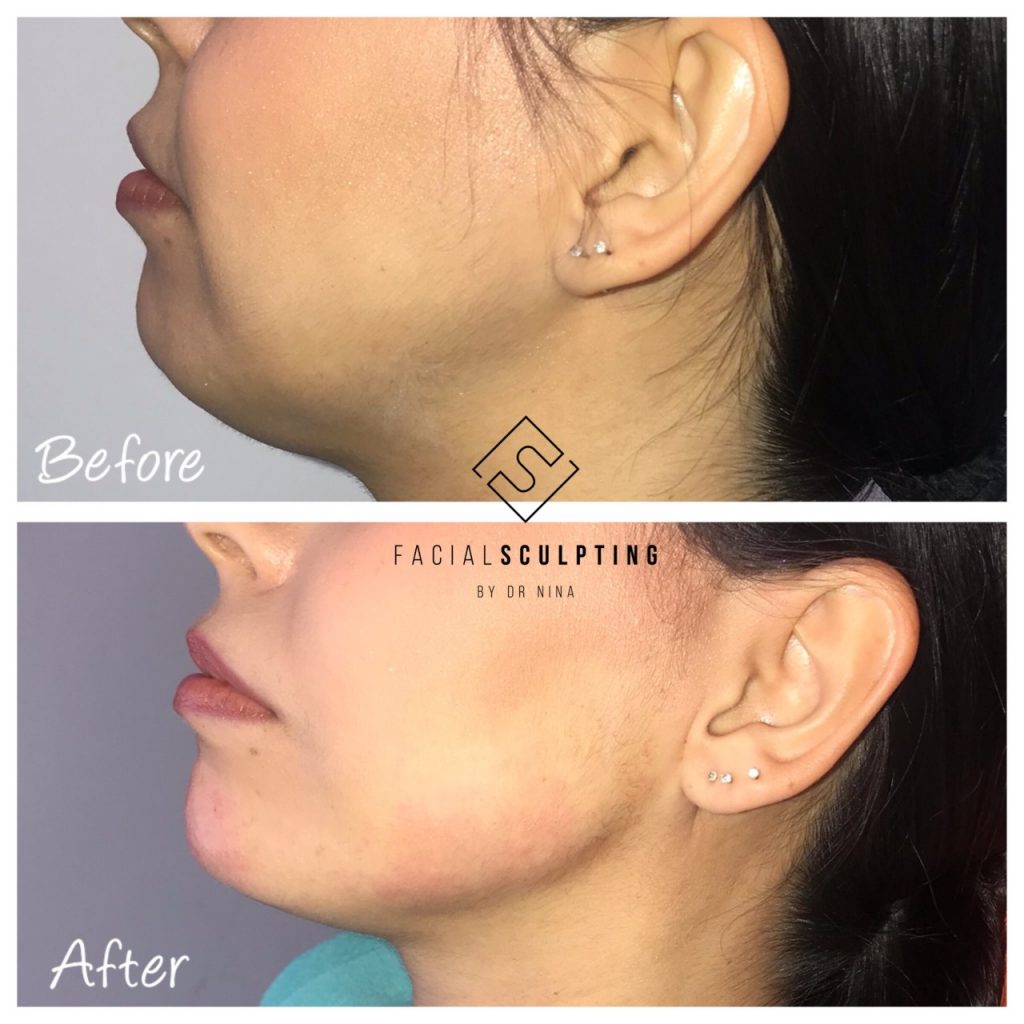Which filler is best for each part of the face ?
Shall I use temporary fillers or semi-permanent ones?
Are non-hyaluronic acid based fillers as safe as hyaluronic acid based ones ?
These are questions that ALL of us have asked to ourselves or to our colleagues at some point in our career as injectors.
After more than 10 years of experience this is what I found works best in my hands , in a combination of best results for the patient and in the patients’ best interest, prioritising safety as always .
Different parts of the face require different fillers to achieve the best results: for best results I mean softening the lines as much as possible and/or giving back the correct amount of volume loss due to ageing or loss of collagen , in a safe way , minimising risks for us and the patient .
Personally in my career I decided to avoid permanent fillers or even semi permanent ones .
The reason behind my choice is because I have seen too many complications arising many years after injections of those products.
Firstly , I have seen lumps appearing 5, 6 or even 7 years down the line , all of a sudden, which often become impossible to remove even surgically and fillers that don’t evolve with the ageing of the face . If you think about it, what you inject today that is right for the ageing stage of this moment might not be right (and more often than not it isn’t) with how the face ages even 1 or 3 years later . Often those fillers keep working in our face uncontrollably stimulating the collagen production creating unwanted lumps.
Secondly , by using temporary fillers, I know that our body will break them down completely 12 months after injection, which gives a great peace of mind not only to us but also to the patient , in case she or he is not entirely happy with the results but doesn’t want to go down the route of dissolving them (using the enzyme hyaluronidase ) and its complications , with a high risk of dissolving the patient’s natural collagen as well.
First of all we have to check the medical history of the patient to find out whether they are any contra-indications to the use of fillers, regardless of the type of it.
There are 2 big choices that have to be made when considering which filler has to be used:
- Hyaluronic acid based or NON-hyaluronic acid based
- High viscosity or low viscosity
Let’ s analyse the different parts of the face and my first choice of fillers to use in them.
LIPS:
I always pick a hyaluronic acid based filler and at the lowest viscosity . The mucosa of the lips is the thinnest in the face and won’t forgive if a high viscosity filler is used, creating lumps and a very unnatural or asymmetric result.
Non hyaluronic acid based fillers have to be avoided at all cost due to proximity of critical anatomical structures.
CHIN:
Patients with a weak chin, a small chin, or irregularities in the chin will see improvements with injection of dermal fillers , without the need of having a permanent implant placed surgically.
The procedure involves injecting filler into the skin to improve projection, volume or definition in the chin. This can also change the contour of the face by balancing the facial features.
Chin Sculpting is often required by patients who have had just had Nose Sculpting, in order to maintain the right proportions and the ‘Golden Ratio’ of facial beauty.
My choice is a hyaluronic acid based one with a very high viscosity as we need a lot of product normally to correct a retro-positioned chin or to lengthen it .
The proximity of the mental artery which occlusion can create necrosis makes a hyaluronic acid based my only choice in this area.
CHEEKS:
Cheek fillers can bring the face into balance by making the cheekbones more prominent and this is the most interesting area where I use the most variety of temporary fillers, due to its safe anatomical features.
Cheek filler can give you instant, razor-sharp definition and a natural-looking, youthful appearance. The treatment also smooths the nose-to-mouth lines, effectively lifting the entire face.Temporary fillers are injected under the skin above the cheekbones. We use either hyaluronic acid based ones or calcium hydroxy-apatite (Radiesse) or Poly-caprolactone (Ellanse).Ellanse and Radiesse also acts as a collagen stimulator, adding more volume and definition.
My first choice in thia area is the Poly-caprolactone based one, as I found it gives the best volumising effect together with a great lift and a longer term collagen stimulation. Six weeks after injection the volume improves of an additional 10-12% and the skin texture improves too.
Ellanse is a dermal filler consisting of Poly-Caprolactone microspheres suspended in a gel carrier consists of mainly water and glycerine. Poly-Caprolactone is a well-known totally bioresorbable soft Medical polymer.
Ellanse is injected into the skin. The gel carrier acts as an instant filler giving instant results. Ellanse stimulates the production of new collagen in and around the area.
To give an additional peace of mind, studies have proven that on a MRI scan, 3 weeks after injecting it, the filler has completely disappeared and it has been replaced by collagen fibers type 1.
NOSE TO MOUTH:
Nose to mouth lines are one of the most common areas of injections , and it could apparently look ‘simpler’ compare to other ones, but it hides a very high risk of necrosis IF the facial artery is occluded : ALWAYS use a hyaluronic acid based filler which can be dissolved if this happens.
NOSE:
Non surgical rhinoplasty is becoming more and more common , as well as its risks, unfortunately .
This is one of the top high risk areas of injection if not the absolute top one, in my eyes.
We can resolve a range of nose issues, such as:
Correct a dorsal hump, making the nose look smaller and straighter
Build the nasal bridge if very shallow
Optically correct a septum deviation
Raise the tip of the nose with Botox
The presence of ramifications of the facial artery especially around the tip of the nose makes this injection extremely dangerous .
I always use a low viscosity hyaluronic acid based filler easily dissolvable if I see any signs of necrosis due to blood flow occlusion.

JAWLINE:
The Jawline Fillers treatment can help both men and women attain a more masculine or feminine jawline, respectively, one of the most popular treatments recently!
Injecting dermal fillers into the jawline can give men who feel their face is too slim or too oval a more chiselled profile.
This treatment is also very popular in women who find that ageing has caused them to lose definition, and want to restore a more youthful look with an upward lift of the jowls.
Jaw fillers are particularly effective combined with the Nefertiti Lift and after jawline slimming .
There is an anatomical risk due to the facial artery which passes on the mandible in an angle to go towards the nose, but equally we need a very dense , high viscosity filler and in big amount to give definition . This is one of the areas where we need much more fillers than what we think we do to achieve the results that we are looking for.
I personally use a Poly-caprolactone based one like Ellanse with a 22G cannula to have the best results in a safe way. A smaller cannula wouldn’t be appropriate for the dense filler to come out.
UNDER EYES:
‘Tear troughs’ – those dark circles under the eyes – are a result of a weakened orbital septum and a loss of plump soft tissue in the cheek area.A very popular treatment recently with potentially very high risks too, due to the presence of infra-orbital nerve and artery .
This area together with the nose is the top two most dangerous treatments (in fact they have been cases of blindness ).
My choice is therefore always a hyaluronic acid based one at low viscosity with a 25G cannula .
My best advice to prevent risks of blindness is to never use a needle and a cannula smaller than 25G and injecting micro droplets amount of filler.
By Dr Nina Bal , BDS (Hons)
 About the author
About the author
Dr Nina Bal is a cosmetic dental surgeon and a facial aesthetics doctor trained in aesthetics facial and dental reconstruction. Her services include non-surgical cosmetic procedures and rejuvenation treatments.
Please visit https://www.facialsculpting.co.uk/
To book an appointment please email info@facialsculpting.co.uk or call 07340093939
Follow her on :
Instagram : https://www.instagram.com/drninafacialsculpting/
Facebook: https://www.facebook.com/drninafacialsculpting/
Twitter: https://twitter.com/drninabal